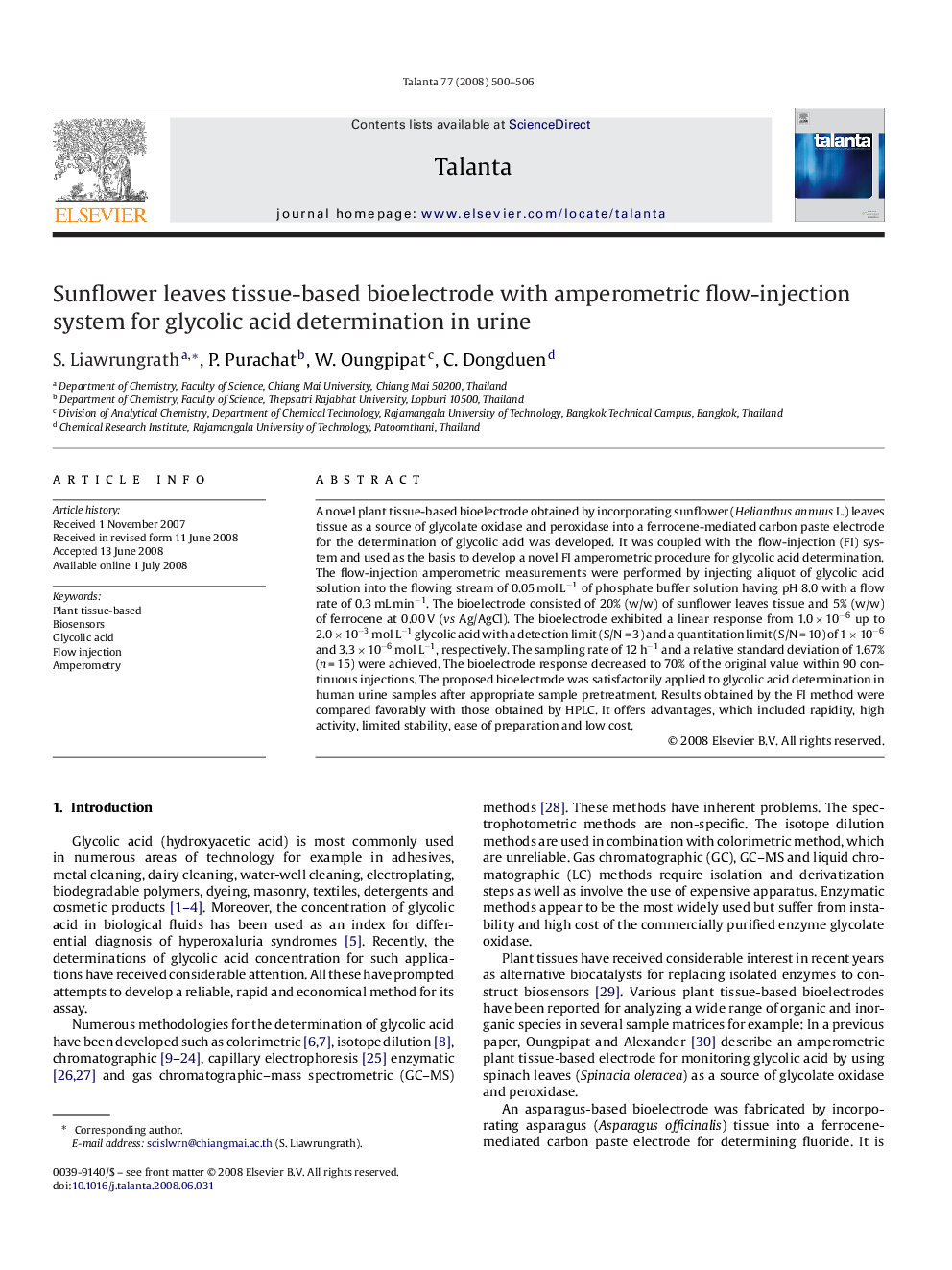| Article ID | Journal | Published Year | Pages | File Type |
|---|---|---|---|---|
| 1243092 | Talanta | 2008 | 7 Pages |
A novel plant tissue-based bioelectrode obtained by incorporating sunflower (Helianthus annuus L.) leaves tissue as a source of glycolate oxidase and peroxidase into a ferrocene-mediated carbon paste electrode for the determination of glycolic acid was developed. It was coupled with the flow-injection (FI) system and used as the basis to develop a novel FI amperometric procedure for glycolic acid determination. The flow-injection amperometric measurements were performed by injecting aliquot of glycolic acid solution into the flowing stream of 0.05 mol L−1 of phosphate buffer solution having pH 8.0 with a flow rate of 0.3 mL min−1. The bioelectrode consisted of 20% (w/w) of sunflower leaves tissue and 5% (w/w) of ferrocene at 0.00 V (vs Ag/AgCl). The bioelectrode exhibited a linear response from 1.0 × 10−6 up to 2.0 × 10−3 mol L−1 glycolic acid with a detection limit (S/N = 3) and a quantitation limit (S/N = 10) of 1 × 10−6 and 3.3 × 10−6 mol L−1, respectively. The sampling rate of 12 h−1 and a relative standard deviation of 1.67% (n = 15) were achieved. The bioelectrode response decreased to 70% of the original value within 90 continuous injections. The proposed bioelectrode was satisfactorily applied to glycolic acid determination in human urine samples after appropriate sample pretreatment. Results obtained by the FI method were compared favorably with those obtained by HPLC. It offers advantages, which included rapidity, high activity, limited stability, ease of preparation and low cost.
